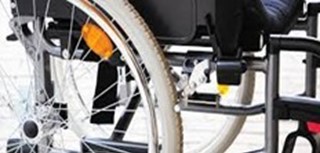Rehabilitation Engineering & Biomechanics

Rehabilitation engineering is the clinical application of engineering to provide services, research, and development to assist people with disabilities. In general, assistive devices are used as aids to mobility and communication. Many areas of rehabilitation engineering require the application of biomechanics, which is the study of forces acting on and within biological structures such as cells, tissues and organs, and the effects of those forces. Within medicine, biomechanics covers motion analysis including gait analysis, design of artificial joints and devices to help fix broken bones, measurement of the functioning of bones, cartilage, intervertebral discs, and other tissues that form part of the musculoskeletal system, as well as studies of the mechanics of respiration and blood circulation.
What does it involve?  Rehabilitation Engineering Departments work to restore or improve the ability of a person to carry out everyday tasks in domestic, educational, vocational, recreational, social and institutional settings. They are involved in the assessment of patients for assistive devices, and fit and repair devices, as well as manufacturing, designing and developing new ones. The range of devices includes wheelchairs and other specialist vehicles, specialised seating, Augmentative and Alternative Communication (AAC) systems such as speech synthesizers, Electronic Assistive Technology (EAT) including telecare, technology access, customised or modified controls, power mobility and integrated access, Functional Electrical Stimulation (FES) (for example to control dropped foot after a stroke), and specialised orthoses and prostheses such as artificial legs. As part of this work, biomechanical analysis such as gait analysis may be carried out.
Rehabilitation Engineering Departments work to restore or improve the ability of a person to carry out everyday tasks in domestic, educational, vocational, recreational, social and institutional settings. They are involved in the assessment of patients for assistive devices, and fit and repair devices, as well as manufacturing, designing and developing new ones. The range of devices includes wheelchairs and other specialist vehicles, specialised seating, Augmentative and Alternative Communication (AAC) systems such as speech synthesizers, Electronic Assistive Technology (EAT) including telecare, technology access, customised or modified controls, power mobility and integrated access, Functional Electrical Stimulation (FES) (for example to control dropped foot after a stroke), and specialised orthoses and prostheses such as artificial legs. As part of this work, biomechanical analysis such as gait analysis may be carried out.
Who needs it?
People with disabilities that impair their physical, cognitive or social function; patients recovering from injuries.
Future developments
As the population is ageing, there will be increasing demand for devices to enable people to live independently for as long as possible; the demand for assistive devices will increase significantly, and the use of telecare will become more widespread. The applications of robotics and virtual reality in rehabilitation will increase in the future. Developments are occurring in the electronic interface of devices with tissues in the body, enabling far more sophisticated control of switches. There is also increasing interest in using biomechanics to improve repair processes in tissues following injuries; this is known as mechanobiology, and can be used to increase bone strength or increase the rate of fracture repair.